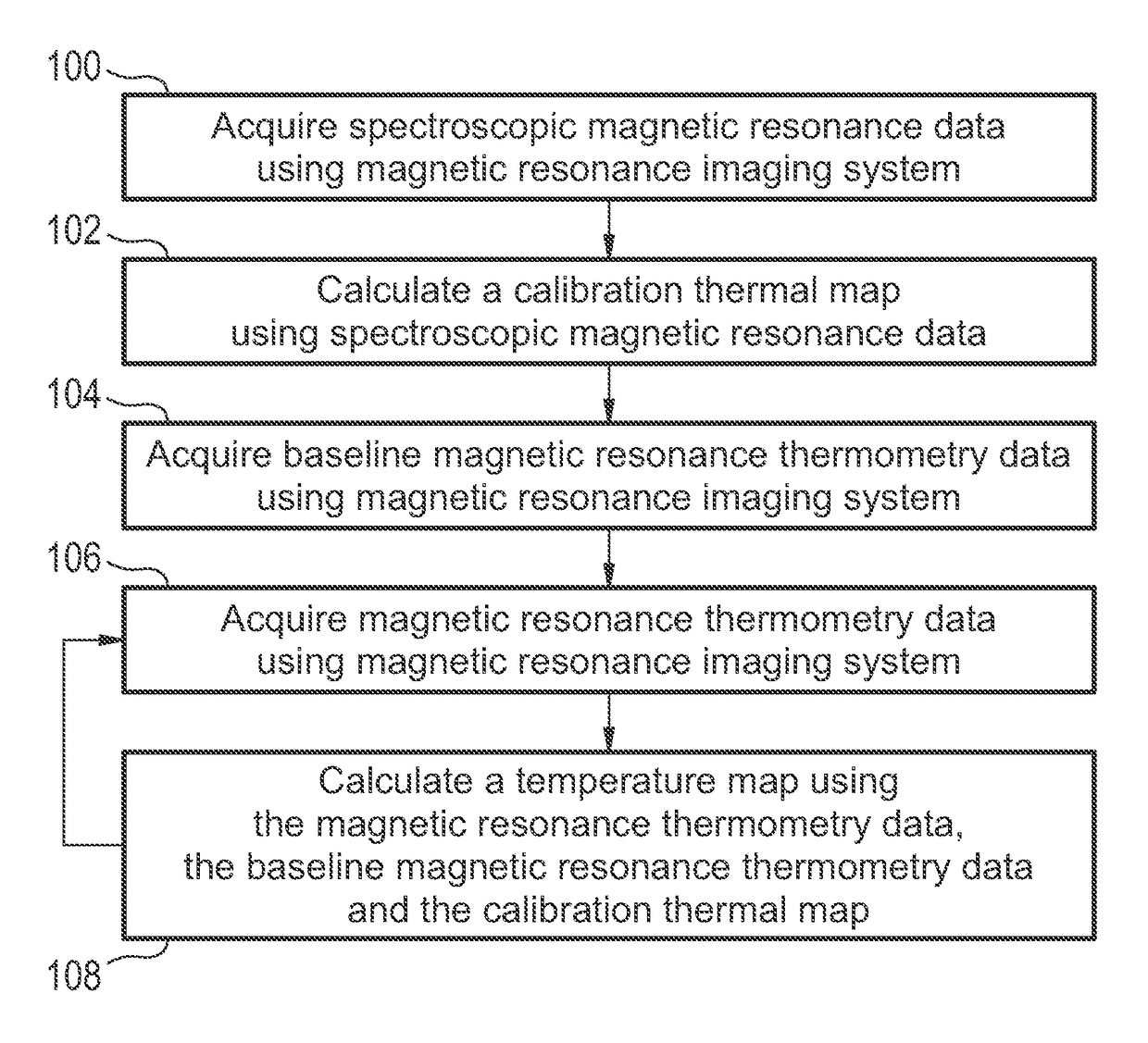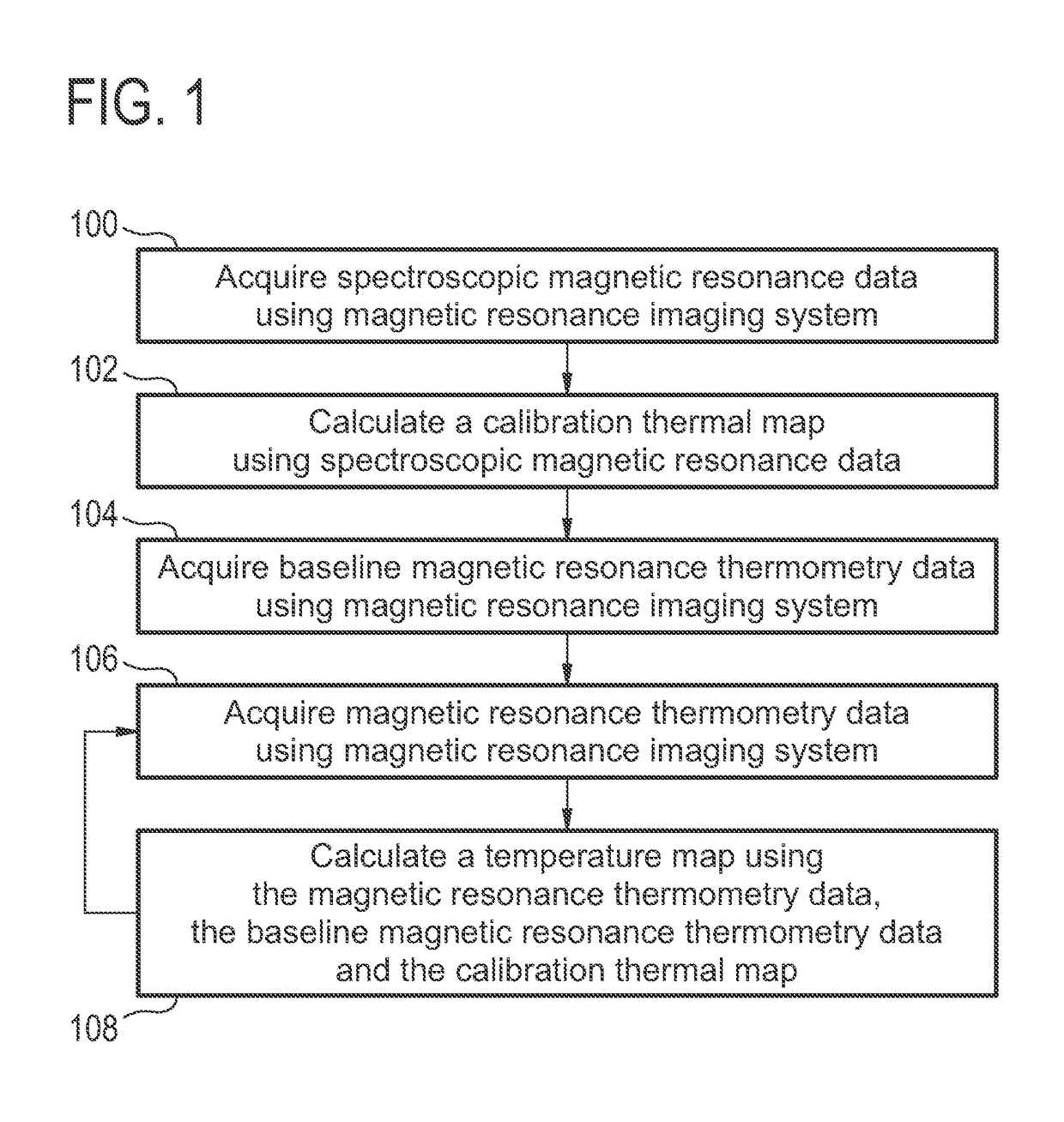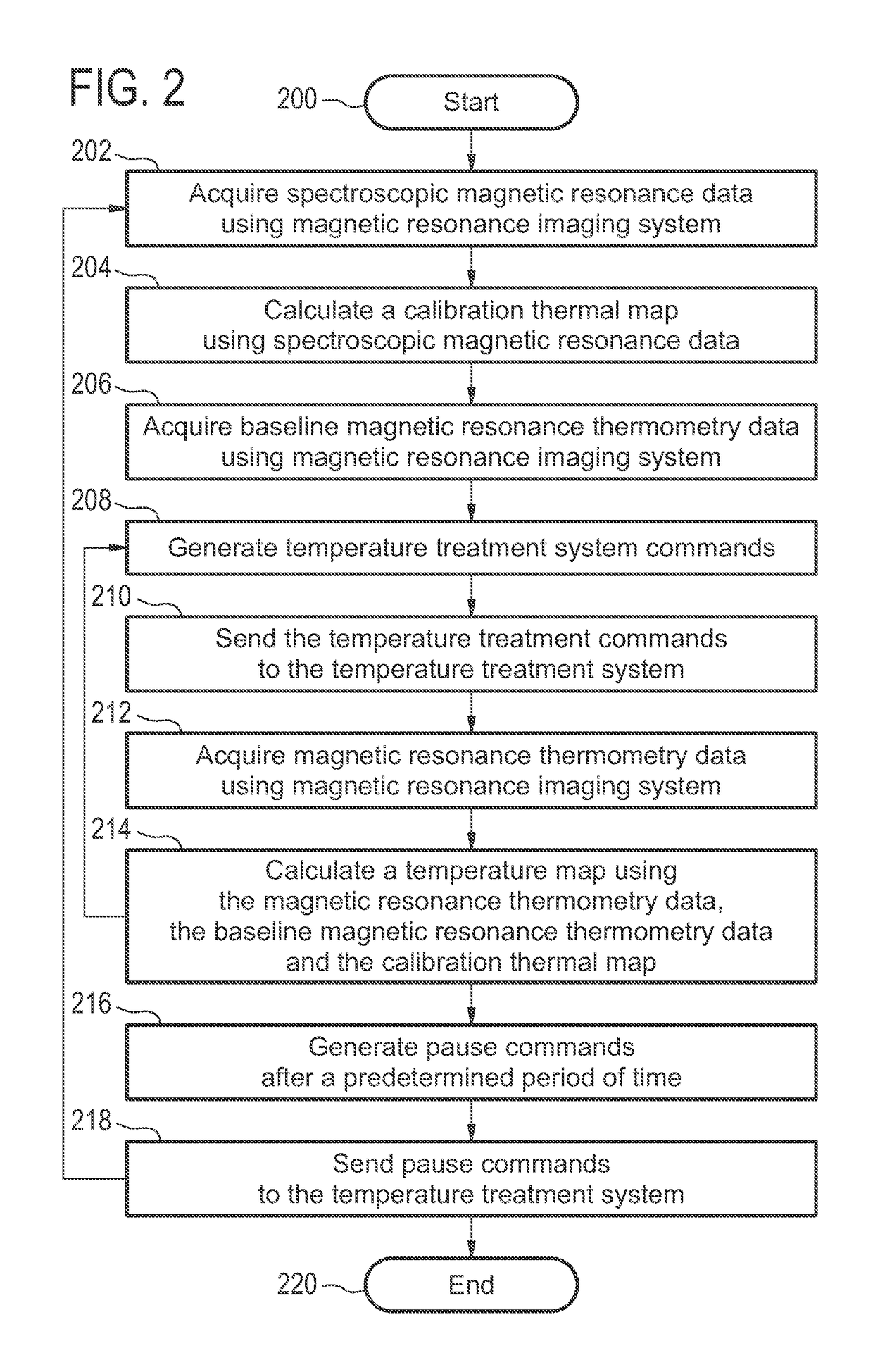Accelerated magnetic resonance thermometry
a magnetic resonance thermometer and accelerated technology, applied in the field of magnetic resonance imaging, can solve the problems of not giving absolute temperature, method is too slow to be used in continuous imaging for most applications,
- Summary
- Abstract
- Description
- Claims
- Application Information
AI Technical Summary
Benefits of technology
Problems solved by technology
Method used
Image
Examples
Embodiment Construction
[0072]Like numbered elements in these figures are either equivalent elements or perform the same function. Elements which have been discussed previously will not necessarily be discussed in later figures if the function is equivalent.
[0073]FIG. 1 shows a flow diagram which illustrates a method according to an embodiment of the invention. First in step 100 spectroscopic magnetic resonance data is acquired using a magnetic resonance imaging system. In step 102 a calibration thermal map is calculated using the spectroscopic magnetic resonance data. In step 104 baseline magnetic resonance thermometry data is acquired using the magnetic resonance imaging system. The baseline magnetic resonance thermometry data may be used to create a baseline set of measurements for comparison to the calibration thermal map. Next in step 106 magnetic resonance thermometry data is acquired using the magnetic resonance imaging system. In step 108 a temperature map is calculated using the magnetic resonance...
PUM
 Login to View More
Login to View More Abstract
Description
Claims
Application Information
 Login to View More
Login to View More - R&D
- Intellectual Property
- Life Sciences
- Materials
- Tech Scout
- Unparalleled Data Quality
- Higher Quality Content
- 60% Fewer Hallucinations
Browse by: Latest US Patents, China's latest patents, Technical Efficacy Thesaurus, Application Domain, Technology Topic, Popular Technical Reports.
© 2025 PatSnap. All rights reserved.Legal|Privacy policy|Modern Slavery Act Transparency Statement|Sitemap|About US| Contact US: help@patsnap.com



